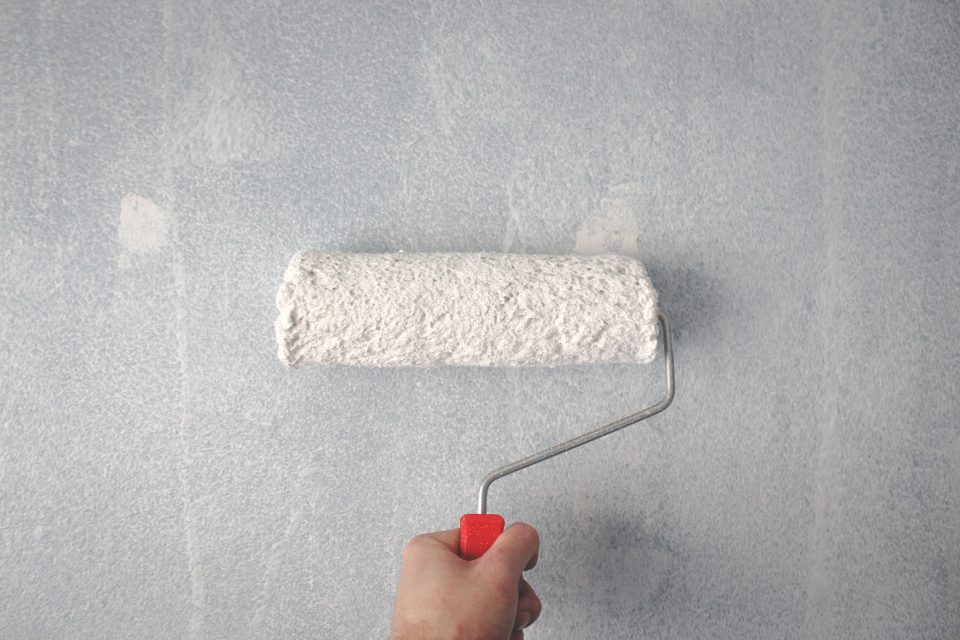When you own your own home, you quickly realize that things don’t stay as they did at the time of purchase. The gorgeous paint treatment that once adorned your walls, overtime, show signs of age and wear. Lots of things things may start breakdown, and hail and winds can cause your roof to leak.
Part of the responsibility of home ownership is that it’s you that’s on the hook for the expense to repair these things. It’s your bank balance that’s that is going to feel the hit.
Making repairs are a part of the territory when it comes to home ownership. Therefore, it’s a good idea to get familiar with small home repairs so that you don’t have to pay a contractor for the every single repair that needs to be made. It’s not just their time that you’ll pay for, but also the cost of materials. That can be a significant blow to your bank account.
Here are four home repairs/updates that you should learn to handle on your own.
Painting Like A Pro

When you own a house, you can expect to have to repaint interior walls every few years. It could be because you just want a fresh new look and painting instantly transforms a room. Other times a wall has to be painted because there has been damage from furniture rubs, roughhousing children, or pet accidents. Whatever your your reasons, knowing the process for painting a room will help.
When it comes to painting, preparation is king. First, you need to lay down drop cloths on the floor to absorb any spilled paint and prevent it from damaging your floors. Second, you need to remove fixtures and fittings so that they don’t get in the way. Don’t try to paint around outlet and light switch covers! It’s tons easier to remove them and then paint. Cover the outlets and switches with painters tape so when you replace the covers everything is clean. Cover permanent light fixtures as well- paint spatter can go further than you think.
Finally, you need to clean the walls with a damp sponge to remove any dust or grease from the wall, leaving a clean, smooth surface to which you can apply paint.
Now you’re ready to apply your paint. Choose your finish accordingly, semi-gloss is typically used in kitchens and bathrooms for easy clean up. Use a scrubbable satin or eggshell finish for other rooms.
Use a brush to cut-in the edges of the walls- meaning just brush the area like a frame- come in about six inches. Then you simply fill in the open area using a paint roller with a nap appropriate for the texture of your wall. Your hardware store paint professional can help you decide what is best. Using a “W” stroke will keep the paint from leaving “stripes” as you paint.
Door Maintenance


Add a Bit of Elegance to Your Home - Under a Texas Sky
November 9, 2022 @ 10:20 am
[…] mindful of any home repairs, that may be needed. Always start there first. You don’t want to end up essentially putting a […]
Home Repairs are a Necessary Inconvenience - Under a Texas Sky
September 25, 2022 @ 2:15 pm
[…] Home repairs are a part of the territory when it comes to home ownership. Therefore, it’s a good idea to get familiar with small home repairs so that you don’t have to pay a contractor for the every single repair that needs to be made. It’s not just their time that you’ll pay for, but also the cost of materials. That can be a significant blow to your bank account. Be sure you don’t neglect the big issues that come up during home ownership. […]
May 3, 2021 @ 11:44 am
I was always really scared to paint my house without hiring a professional. I finally spoke with someone at Lowes who told me that it was really hard to mess up a wall if you buy some quality paint. He encouraged me to try it on one wall first and then proceed. It came out looking really good! When I sold my home I did most of the repairs on my own. I only hired professionals for a drywall repair job and for a survey. Nice post.
May 6, 2021 @ 4:42 pm
Pabil- It’s so satisfying when you can do repairs yourself. Painting is the best way to change the look of a room for sure. I love taking a room and changing the decor with a few simple changes like paint. I appreciate you stopping by to share your experience. Blessings- Kelly
September 11, 2020 @ 2:01 pm
This is a really helpful blog post! I’m a first time home owner and had to have a painting contractor come out just to patch some really bad holes in the wall and repaint over them. They did a great job, but this is something I definitely need to learn how to do myself! Next time I should save the call for something that I actually can’t do myself like electrical work or roof repairs!
September 15, 2020 @ 1:56 pm
Sarah- We always try to save the big technical jobs for the expert but do what we can. Thanks for stopping by.
Why is my Electric Bill so High? -
July 16, 2020 @ 11:10 am
[…] like cracks in the walls, holes in the roof, breaks in the window seals, etc. It’s important to repair these problems as soon as possible because they create areas that allow hot and cold air to seep in and out. This, […]
5 Home Maintenance Chores for Summer -
July 13, 2020 @ 5:08 pm
[…] is one of the home repairs you can easily do yourself. Make sure you prepare any walls of surfaces that need a touch of […]